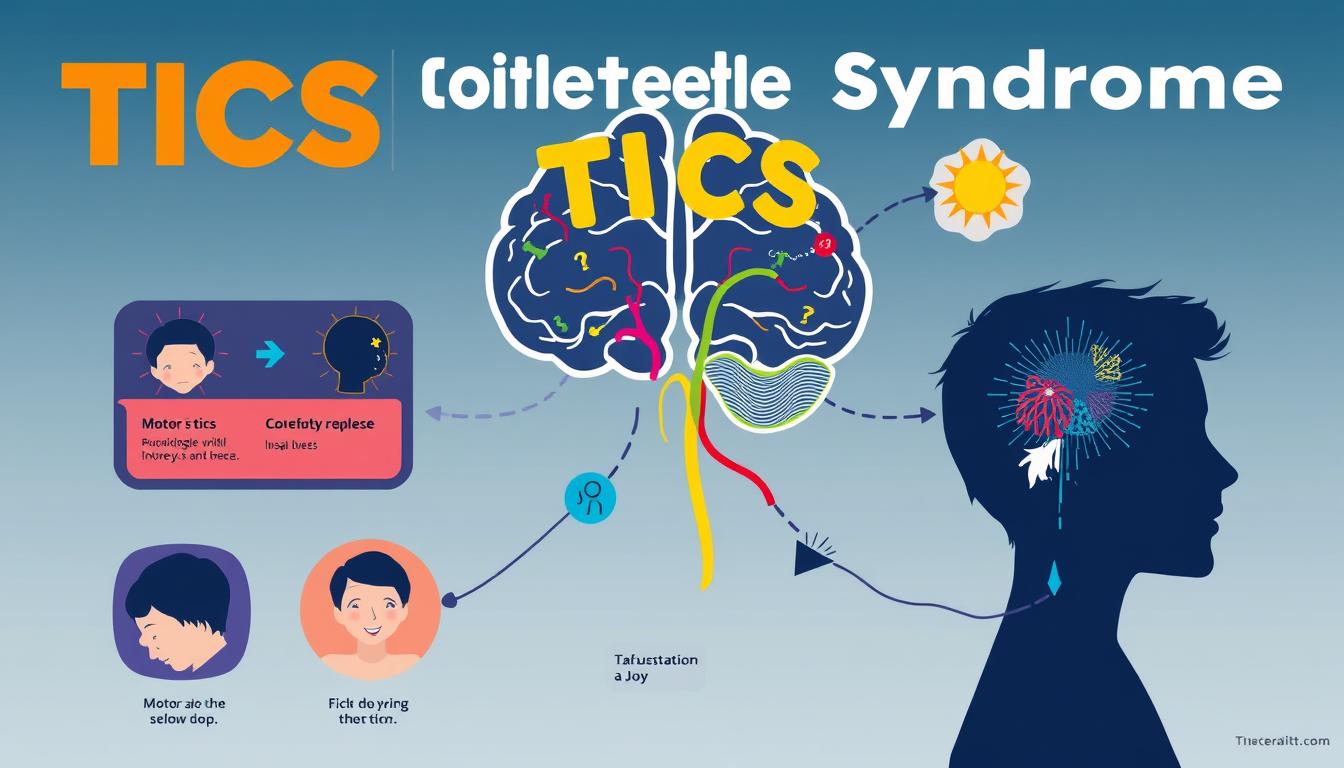Post-Traumatic Stress Disorder (PTSD) in teens is a big mental health issue. It often gets overlooked. We want to help parents, teachers, and doctors understand the tough times teens face after traumatic events.
PTSD in teens is not just a smaller version of what adults go through. Teens deal with trauma in their own way. They need special help to get better. Our guide will dive into the world of teen trauma, aiming to make a big difference in their lives.
It’s important to understand teen trauma with kindness and knowledge. We’ll look at the signs, what sets off symptoms, and how to help teens heal. This way, they can find emotional balance again.
Key Takeaways
- PTSD in adolescents has unique characteristics distinct from adult experiences
- Early recognition of symptoms is key for effective help
- Trauma affects how a teen’s brain grows and handles emotions
- Support systems are vital for teen PTSD recovery
- Getting professional help can greatly improve their future
Post-Traumatic Stress Disorder (PTSD) in Adolescents: An Overview
Teen mental health is a big concern, with PTSD being a complex issue. It’s important to understand how trauma affects teens differently than adults. We need a special approach to help them.
Helping teens with emotional issues requires careful attention and knowledge. Anxiety and PTSD often go together, making it tough for young people to cope with trauma.
Key Characteristics of PTSD in Young People
- Intense emotional responses to traumatic memories
- Heightened startle reactions
- Persistent negative mood changes
- Difficulty maintaining social connections
- Disrupted sleep patterns
How PTSD Differs in Adolescents vs Adults
| Characteristic | Adolescents | Adults |
|---|---|---|
| Emotional Expression | More volatile and unpredictable | More controlled and regulated |
| Coping Mechanisms | Less developed, more reactive | More established, strategic |
| Social Impact | Significant developmental interference | More contained social disruption |
Common Misconceptions About Teen PTSD
“Teenagers are resilient and will just ‘get over’ traumatic experiences” – This dangerous myth undermines the serious nature of adolescent PTSD.
We know that teen PTSD needs a special understanding. Each adolescent’s experience is unique. Making assumptions can stop us from helping them properly.
Our goal is to offer compassionate support. We aim to understand the complex emotional world of teens dealing with trauma.
Recognizing Early Warning Signs and Symptoms
Spotting Post-Traumatic Stress Disorder (PTSD) in teens is key. It involves watching for complex emotional signs. Knowing about adolescent PTSD helps parents and teachers spot important warning signs.
Teens with PTSD show many intense emotional and behavior signs. These signs can be hard to spot early. But finding them quickly is vital for helping them.
- Persistent anxiety and heightened startle responses
- Sudden mood swings and emotional unpredictability
- Withdrawal from social interactions
- Nightmares and sleep disruptions
- Difficulty concentrating or maintaining academic performance
Physical signs are also important to notice. Adolescent PTSD can cause physical reactions that affect their health:
| Physical Symptoms | Potential Impact |
|---|---|
| Chronic headaches | Reduced school participation |
| Unexplained stomach pain | Social isolation |
| Rapid heart rate | Increased anxiety |
“Understanding these signs is the first step toward healing and support.” – Child Psychology Research Institute
Spotting these symptoms early can greatly help teens with PTSD. Getting a professional diagnosis is key to creating a good support plan.
Common Triggers and Traumatic Events in Teen PTSD
Understanding teen trauma means looking at different experiences that deeply affect young minds. Traumatic events come from various places, each with its own challenges for teens.
Teens are often hit hard by traumatic events. These can lead to lasting mental health issues. Our studies show key areas where mental health can be greatly affected.
School-Related Trauma
Schools can be unexpected places of trauma for teens. Common triggers include:
- Persistent bullying
- Physical violence
- Cyberbullying
- Public humiliation
- Academic pressure and failure
Family-Related Traumatic Experiences
Family life can also be a source of deep psychological challenges for teens. Traumatic experiences include:
- Domestic violence
- Parental divorce
- Substance abuse at home
- Emotional or physical neglect
- Loss of a family member
Social and Peer-Related Triggers
Social interactions can also lead to trauma for teens. Important triggers are:
- Relationship breakups
- Social media harassment
- Sexual harassment
- Betrayal by close friends
- Exclusion from peer groups
“The impact of these experiences can be profound and long-lasting, shaping an adolescent’s psychological landscape.” – Youth Mental Health Institute
Knowing these triggers is the first step in helping teens through tough times. It helps prevent long-term mental health problems.
The Impact of PTSD on Academic Performance
Post-Traumatic Stress Disorder (PTSD) can make school hard for teens. Students with PTSD often find it tough to keep up with their schoolwork. They struggle to stay focused and engaged in class.
PTSD symptoms affect many important areas in school:
- Concentration disruptions
- Memory recall challenges
- Increased anxiety during assessments
- Reduced classroom participation
Cognitive functioning becomes substantially impaired when teens experience post-traumatic stress. They face many challenges in school, including:
| PTSD Symptom | Academic Impact |
|---|---|
| Hypervigilance | Difficulty focusing during lectures |
| Emotional Numbness | Reduced motivation for schoolwork |
| Recurring Flashbacks | Interruptions in learning processes |
“Understanding the complex link between PTSD and school performance is key to helping.” – Mental Health Research Institute
Schools and teachers are very important in helping teens with PTSD. By providing special support, they can help students keep up with their studies. This way, they can manage their mental health while doing well in school.
Social and Emotional Effects on Teenage Development
Teen trauma can deeply affect emotional growth, making it hard for teens to grow up. It changes how they see themselves and the world. This can be very challenging for them.
Peer Relationship Challenges
Teens with anxiety disorders find it tough to make and keep friends. They face:
- Difficulty trusting peers
- Increased social isolation
- Reduced communication skills
- Heightened emotional reactivity
Family Dynamic Changes
Trauma can change how families interact, leading to tension and misunderstandings. Teens might see:
- Reduced emotional availability
- Communication breakdowns
- Potential conflict escalation
“Understanding a teenager’s emotional landscape is key to providing supportive intervention.” – Dr. Elizabeth Roberts, Child Psychologist
Impact on Self-Identity
PTSD can mess with a teen’s sense of self. Research shows that trauma may cause:
| Identity Aspect | Potential Impact |
|---|---|
| Self-Perception | Negative self-image |
| Emotional Regulation | Increased vulnerability |
| Future Outlook | Reduced confidence |
Knowing these emotional challenges helps us create better support for healing and growth.
Diagnostic Criteria and Assessment Methods

Spotting Post-Traumatic Stress Disorder (PTSD) in teens is a detailed task. Mental health experts use certain criteria to check for youth mental health issues.
Checking for adolescent PTSD involves detailed screening and expert evaluations. Doctors work to tell apart normal teen behaviors from signs of trauma.
“Accurate diagnosis is the first critical step in supporting adolescents experiencing PTSD” – Child Psychology Research Institute
Key Diagnostic Assessment Components
- Comprehensive clinical interviews
- Standardized psychological assessments
- Trauma history evaluation
- Symptom duration and intensity measurement
Experts use special tools made for teen PTSD. These tools help spot emotional and behavioral signs that are different in teens.
Critical Diagnostic Criteria
- Exposure to traumatic event
- Intrusive memories or flashbacks
- Persistent avoidance behaviors
- Negative changes in mood and cognition
- Heightened reactivity and arousal
Understanding PTSD in teens needs special knowledge. Mental health experts know that teens react differently to trauma than adults.
Early and accurate diagnosis opens pathways to targeted treatment and supportive interventions for teens struggling with trauma-related challenges.
Evidence-Based Treatment Approaches
Helping teens with PTSD needs special therapy that gets their emotional needs. Our method uses proven ways to help teens heal from trauma.
Good mental health care can change a teen’s life. We know each teen’s trauma story is unique. So, we tailor our support to fit their needs.
Trauma-Focused Cognitive Behavioral Therapy
Trauma-focused CBT is a strong way to treat teens with anxiety. It helps them:
- Deal with traumatic memories safely
- Learn healthy ways to cope
- Grow emotionally strong again
- Change negative thoughts
Eye Movement Desensitization and Reprocessing (EMDR)
EMDR is a new therapy for teens to deal with traumatic memories. It uses eye movements to lessen the pain of bad experiences.
Group Therapy Options
| Therapy Type | Key Benefits | Age Group |
|---|---|---|
| Peer Support Groups | Reduces isolation, builds connections | 13-17 years |
| Structured Group Therapy | Teaches shared coping strategies | 14-18 years |
| Trauma-Specific Groups | Focuses on specific traumatic experiences | 15-19 years |
“Healing from trauma is a journey of courage, not a destination of perfection.” – Mental Health Expert
We aim to offer caring, science-backed support. We want to help teens regain their emotional health and build strong futures.
The Role of Family Support in Recovery

Dealing with adolescent PTSD needs a full plan. Family support is key. Teens with trauma need a caring space for healing and understanding.
Good family support for teen trauma includes several steps:
- Creating a safe and open communication space
- Listening without judgment
- Validating the adolescent’s emotional experiences
- Seeking professional guidance
Family dynamics greatly affect an adolescent’s PTSD recovery. Parents and guardians must spot triggers and offer steady emotional support.
“Healing happens in connection, not isolation” – Trauma Recovery Expert
Building a supportive family takes time, learning, and effort. Families can help their teens by:
- Attending therapy sessions together
- Learning about adolescent PTSD symptoms
- Establishing predictable routines
- Practicing empathetic communication
| Support Strategy | Impact on Teen Recovery |
|---|---|
| Active Listening | Builds Trust and Emotional Safety |
| Professional Counseling | Provides Specialized Trauma Intervention |
| Consistent Emotional Support | Enhances Psychological Resilience |
Remember, recovery is a collaborative journey that requires understanding, patience, and professional guidance.
School-Based Support Systems and Accommodations
Dealing with mental health issues in schools is key. For teens with Post-Traumatic Stress Disorder (PTSD), schools are vital. They offer the support and understanding needed.
Helping students with PTSD requires a few important steps:
- Individualized Education Plans (IEPs) tailored to specific trauma-related needs
- Confidential counseling services on campus
- Flexible attendance and assignment policies
- Trained staff who understand PTSD triggers
Creating a safe place for learning is important. Compassionate educators can make a big difference by using trauma-informed practices.
“Understanding is the first step toward healing” – Mental Health Professionals Association
Some important accommodations include:
- Quiet testing spaces
- Extended assignment deadlines
- Permission to leave class if feeling overwhelmed
- Access to school counselors
We’re dedicated to helping youth mental health. We aim to make schools safe and supportive. Every student should have the chance to succeed, no matter their past.
Prevention Strategies and Coping Mechanisms
Dealing with teen trauma and anxiety needs a full plan for emotional health. We teach teens how to handle their feelings and grow strong over time.

Healthy Coping Skills Development
Teens need good ways to deal with tough emotions. We teach them many ways to stay mentally healthy:
- Practicing mindfulness meditation
- Engaging in creative expression through art or journaling
- Maintaining regular physical exercise
- Establishing consistent sleep patterns
Building Resilience
Being resilient is key for teens facing trauma and anxiety. We help them grow their emotional smarts and learn to adapt.
| Resilience Strategy | Key Benefits |
|---|---|
| Positive Self-Talk | Improves self-confidence and emotional regulation |
| Goal Setting | Enhances motivation and sense of control |
| Social Support Networks | Provides emotional connection and support |
Stress Management Techniques
Managing stress is vital for teens’ emotional health. We suggest these methods:
- Deep breathing exercises
- Progressive muscle relaxation
- Cognitive reframing of negative thoughts
- Regular peer and professional counseling
“Resilience is not about being unable to be affected by challenging experiences, but about learning to transform those experiences into opportunities for growth.” – Mental Health Expert
With these strategies, teens can learn strong mental health skills. These skills help them stay emotionally well and grow personally.
Conclusion
Understanding Post-Traumatic Stress Disorder (PTSD) in Adolescents is complex. It needs a full approach that sees the special challenges young people have. Our guide has shown the deep need for early help and caring support.
Family support is key for teens with PTSD. We’ve seen how families, schools, and mental health teams can work together. This teamwork helps teens heal and grow strong.
Starting to talk openly about mental health is important. By knowing the signs, getting the right treatment, and keeping support strong, teens can feel safe again. Our work together can change young lives, giving them hope and a way to heal.
We need to be patient, understanding, and take a complete approach. Working together, we can make places where teens can heal, learn, and succeed after tough times.



